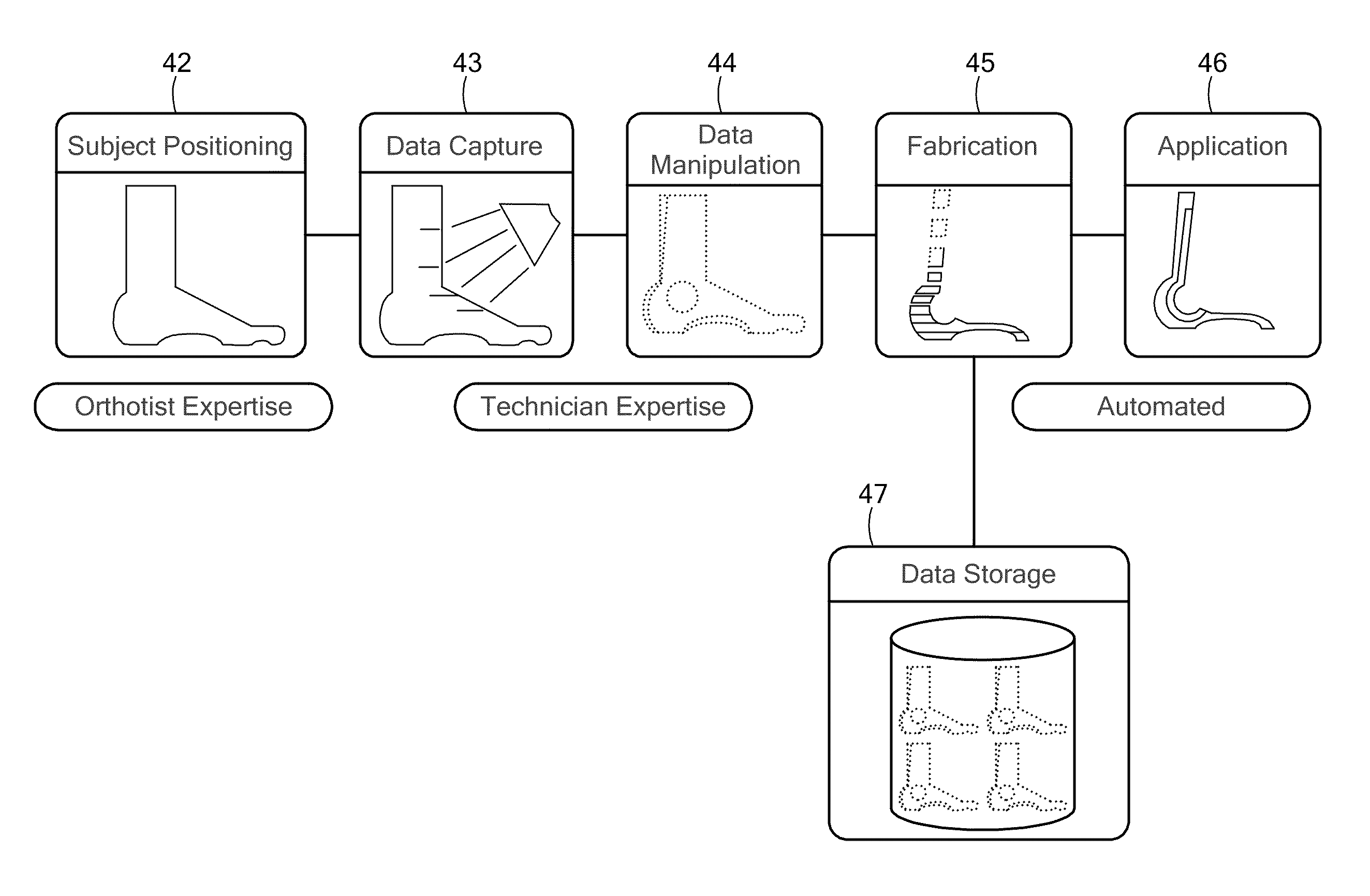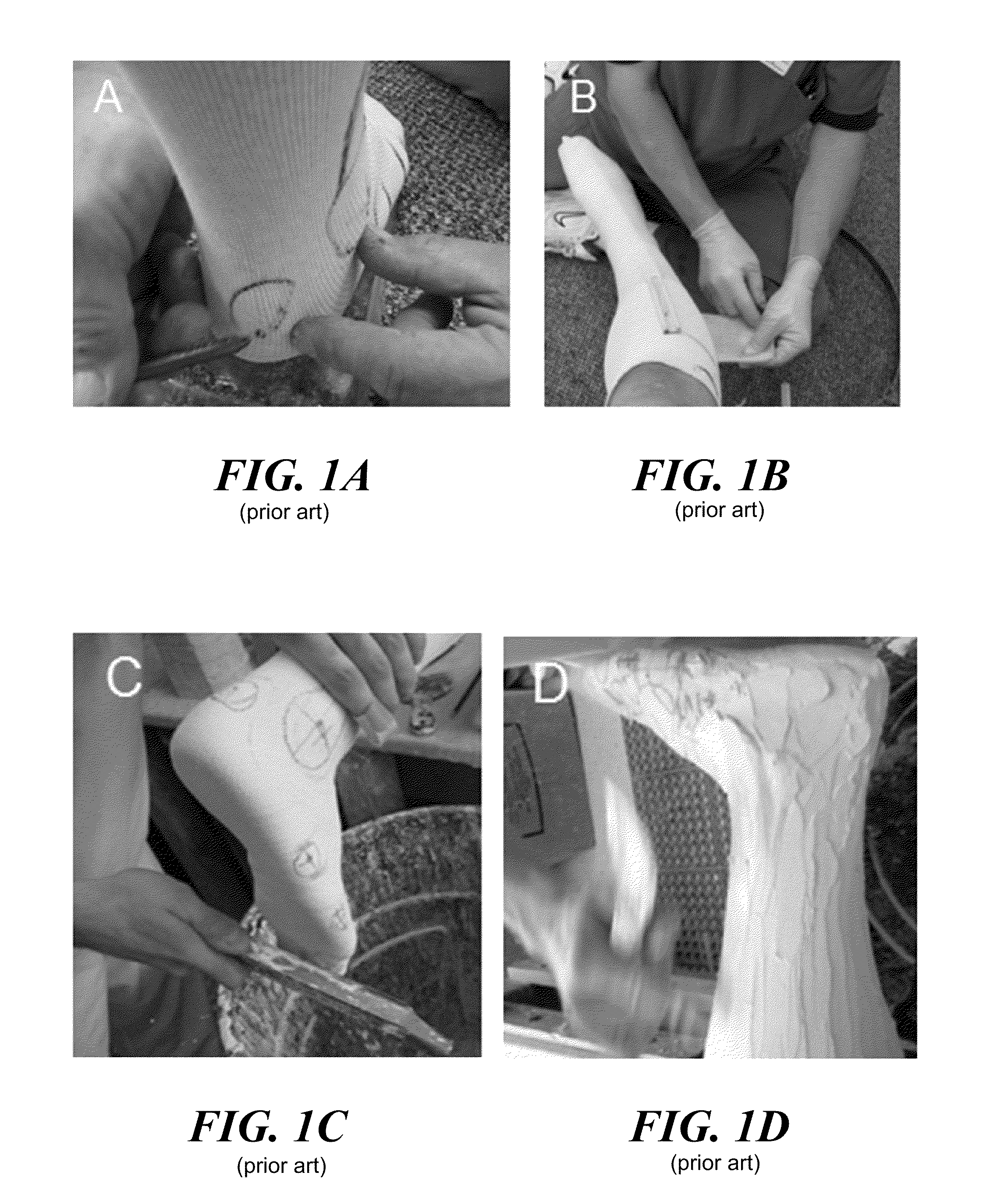Patient specific ankle-foot orthotic device
an ankle-foot orthotic and patient technology, applied in the field of patient specific ankle-foot orthotic devices, can solve the problems of laborious and time-consuming manual process performed by skilled orthotists, standard models that do not provide individualized comfort or support to the wearer, and are not created to fit the anatomy of a specific subj
- Summary
- Abstract
- Description
- Claims
- Application Information
AI Technical Summary
Benefits of technology
Problems solved by technology
Method used
Image
Examples
Embodiment Construction
[0023]As an exemplary patient-specific orthotic device type, a posterior leaf spring AFO that treats drop foot was chosen. A standard AFO was characterized (Type C-90 Superior Posterior Leaf Spring, AliMed, Inc., Dedham, Mass.) and the performance of the orthotic device produced by practice of the method of the invention was compared to this standard device.
[0024]The main steps in the method according to the invention are now described. All these steps are general and could be used on any body part. Referring now to FIG. 5, after the body part of the patient in need of the patient-specific orthotic device is identified, the appropriate appendage of the patient is positioned (42) and the external contours of the body part are imaged (43) to obtain a digital image of the freeform surfaces comprising the patient's anatomy in the area of interest using any 3D camera / scanning technology that is capable of creating a full 3D point cloud. This process requires data from the full extent of ...
PUM
 Login to View More
Login to View More Abstract
Description
Claims
Application Information
 Login to View More
Login to View More - R&D
- Intellectual Property
- Life Sciences
- Materials
- Tech Scout
- Unparalleled Data Quality
- Higher Quality Content
- 60% Fewer Hallucinations
Browse by: Latest US Patents, China's latest patents, Technical Efficacy Thesaurus, Application Domain, Technology Topic, Popular Technical Reports.
© 2025 PatSnap. All rights reserved.Legal|Privacy policy|Modern Slavery Act Transparency Statement|Sitemap|About US| Contact US: help@patsnap.com



